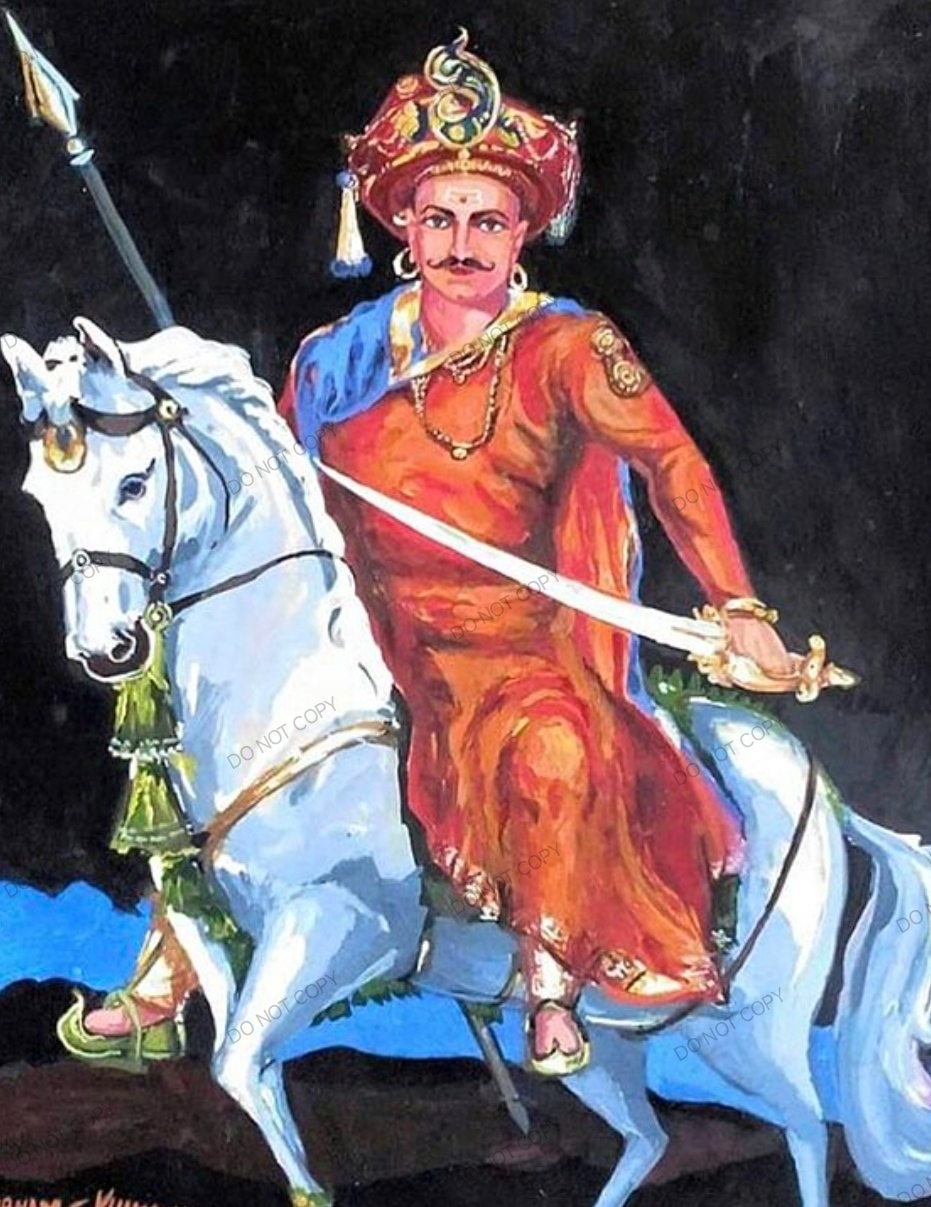Peshwa Bajirao I:Unconquered Warrior and Architect of the Maratha Empire(18 August 1700- 28 April 1740)
Peshwa Bajirao I:Unconquered Warrior and Architect of the Maratha Empire(18 August 1700- 28 April 1740)
Introduction
The history of India is adorned with countless heroes, but few shine as brightly as Peshwa Bajirao I. A brilliant military commander, a visionary leader, and a patriot devoted to the dream of Hindavi Swarajya, Bajirao transformed the Maratha Empire into a formidable pan-Indian power. His leadership, military genius, and indomitable spirit carved an everlasting place for him in Indian history.
Early Life and Education
Bajirao Ballal Bhat was born on 18 August 1700 into a distinguished Chitpavan Brahmin family in the Deccan. His father, Balaji Vishwanath, was the first Peshwa of the Maratha Empire and a trusted aide of Chhatrapati Shahu Maharaj.
From childhood, Bajirao was trained in the art of warfare, statecraft, swordsmanship, horsemanship, and archery. His sharp intellect, physical prowess, and leadership qualities were apparent even in his youth. He grew up with a singular goal — to free India from Mughal domination and expand the Maratha banner across the subcontinent.
Appointment as Peshwa
After the death of Balaji Vishwanath in April 1720, the 20-year-old Bajirao was appointed as the Peshwa (Prime Minister) by Chhatrapati Shahu Maharaj. His appointment was bold and unconventional, as Bajirao was young and relatively inexperienced. However, Shahu Maharaj saw in him the spark of greatness, and history would soon prove this decision wise.
Bajirao pledged to fulfill the vision of Hindavi Swarajya and immediately embarked on aggressive military campaigns.
Major Military Campaigns and Victories
Battle of Palkhed (1728)
Facing the powerful Nizam-ul-Mulk of Hyderabad, Bajirao displayed extraordinary strategic brilliance. In the Battle of Palkhed in February 1728, he executed a series of lightning maneuvers, cutting off the Nizam's supply lines and forcing him to surrender. Modern military historians admire this battle as a classic example of mobile cavalry warfare.
The Delhi Campaign (1737)
In a daring move, Bajirao marched towards the Mughal capital, Delhi, with remarkable speed. In March 1737, he defeated the Mughal forces at the Battle of Delhi, compelling Emperor Muhammad Shah to seek peace. This campaign severely weakened Mughal authority and established the Marathas as the dominant power in India.
Bundelkhand Campaign and Alliance with Chhatrasal
The Bundela king Chhatrasal sought Bajirao's help against the Mughals. Responding swiftly, Bajirao liberated Bundelkhand around 1731, and in gratitude, Chhatrasal offered Bajirao a significant part of his kingdom and his daughter, Mastani's hand in marriage.
Capture of Vasai (1739)
Bajirao turned his attention towards the Portuguese strongholds on the western coast. In 1739, he led the campaign that resulted in the capture of the important Vasai Fort, dealing a crushing blow to Portuguese ambitions in India.
Military Tactics and Genius
Bajirao was a master of innovative military tactics.
His strategies included:
Rapid Movements: Swift deployment of light cavalry units.
Guerrilla Warfare: Surprise attacks followed by sudden retreats.
Logistics Disruption: Severing enemy supply and communication lines.
Psychological Warfare: Demoralizing the enemy through swift, unexpected strikes.
His campaigns involved covering hundreds of miles at astonishing speed, often outmaneuvering larger and better-equipped armies.
Notably, Bajirao fought 41 major battles and never lost a single one — a record few commanders in world history can claim.
Personal Life: Kashibai and Mastani
Bajirao's first wife, Kashibai, came from a prestigious family and was deeply devoted to him.
Later, Bajirao fell in love with Mastani, a woman of extraordinary beauty, valor, and culture — daughter of King Chhatrasal. Their relationship sparked controversy among orthodox elements of Maratha society. Despite societal opposition, Bajirao stood firm in his affection for Mastani, showcasing his personal courage alongside his battlefield heroism.
Death
Continuous military campaigns, personal stresses, and illnesses weakened Bajirao's health. While leading a campaign, he fell seriously ill and passed away on 28 April 1740 at Raverkhedi, near the Narmada River in present-day Madhya Pradesh.
His cremation site, Bajirao Samadhi, remains a revered monument to his memory.
Legacy
Bajirao I’s contributions shaped the future of the Maratha Empire:
He expanded Maratha influence deep into North India.
He established Pune as a major political and cultural center.
He inspired subsequent Maratha leaders who, after him, challenged British and Mughal dominance.
His life exemplified patriotism, loyalty, valor, and strategic brilliance.
Historians often regard him as one of the greatest cavalry generals in world history.
Conclusion
Peshwa Bajirao I was not merely a warrior; he was a statesman, a visionary, and a national hero. His dream of Hindavi Swarajya inspired generations.
Even today, his life is a shining example of how courage, vision, and leadership can reshape history.
"Bajirao was not just a man — he was a storm, a symbol of Maratha pride, and the spirit of undying Indian valor."
